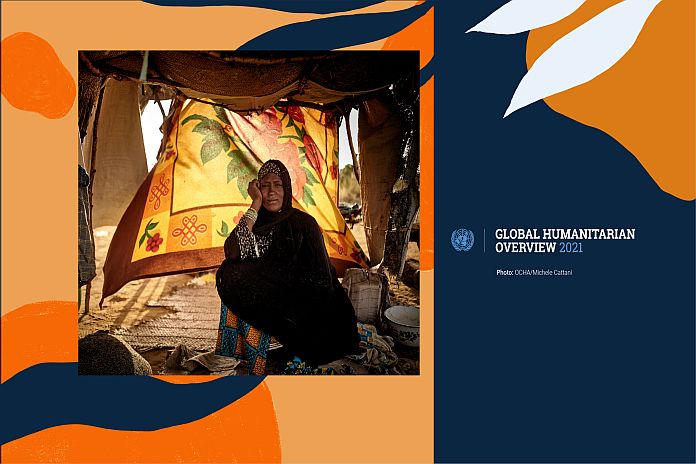GENEVA, Switzerland – The shock of COVID-19 has pushed the number of people who need humanitarian assistance worldwide to a record high – up by 40 percent compared to the same time last year.
If all those who will need humanitarian aid next year lived in one country, it would be the world’s fifth-largest nation, with a population of 235 million.
The UN and its partners aim to help 160 million of the most vulnerable people who face hunger, conflict, displacement, and the impacts of climate change and the COVID-19 pandemic.
Local and global humanitarian organizations stand ready to save lives and livelihoods and respond to the special needs of women and children as well as people with disabilities and mental health needs. They need solidarity and funding from the rest of the world.
The Global Humanitarian Overview (GHO) 2021 sets out 34 response plans covering 56 vulnerable countries. It is presented [today] in Geneva at an event with opening remarks from UN secretary-general António Guterres and UN humanitarian chief Mark Lowcock, and the participation of donor representatives and national and international NGOs. Subsequent presentations will take place on the same day in Berlin, Brussels, London and Washington, DC.
“The humanitarian system again proved its worth in 2020, delivering food, medicines, shelter, education and other essentials to tens of millions of people,” said UN secretary-general António Guterres.
“But the crisis is far from over. Humanitarian aid budgets face dire shortfalls as the impact of the global pandemic continues to worsen. Together, we must mobilize resources and stand in solidarity with people in their darkest hour of need.”
The lives of people in every nation and corner of the world have been upended by the impact of the pandemic. Those already living on a knife’s edge are being hit disproportionately hard by rising food prices, falling incomes, interrupted vaccination programmes and school closures. Extreme poverty has risen for the first time in 22 years. Multiple famines loom on the horizon.
UN humanitarian chief Mark Lowcock said: “The rich world can now see the light at the end of the tunnel. The same is not true in the poorest countries. The COVID-19 crisis has plunged millions of people into poverty and sent humanitarian needs skyrocketing. Next year we will need $35 billion to stave off famine, fight poverty, and keep children vaccinated and in school.
“A clear choice confronts us. We can let 2021 be the year of the grand reversal – the unravelling of 40 years of progress – or we can work together to make sure we all find a way out of this pandemic.”
International donors gave a record $17 billion in 2020 for collective humanitarian response. Data shows that 70 percent of the people targeted for aid were reached, an increase compared to 2019. But as needs are rising, funding remains less than half of what the UN and partner organizations asked for. Next year, the estimated cost of response is $35 billion.





